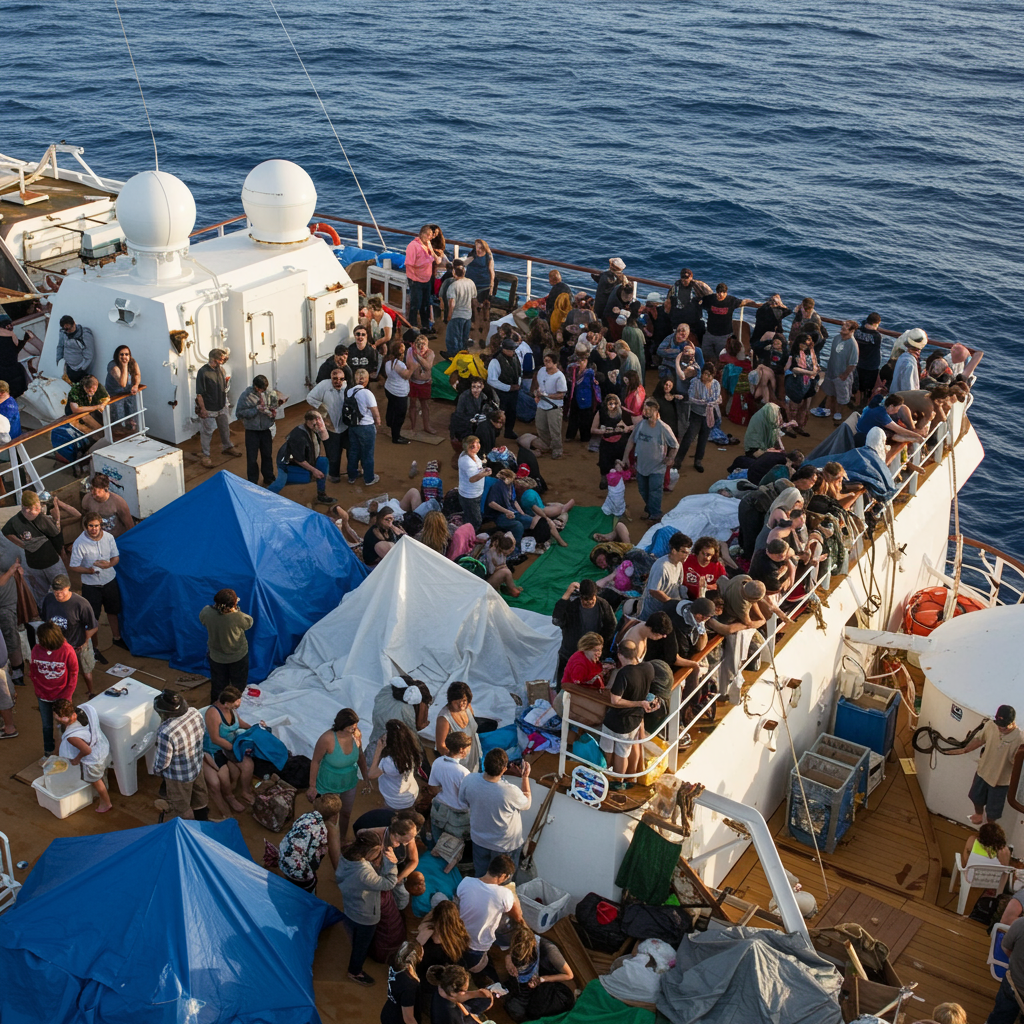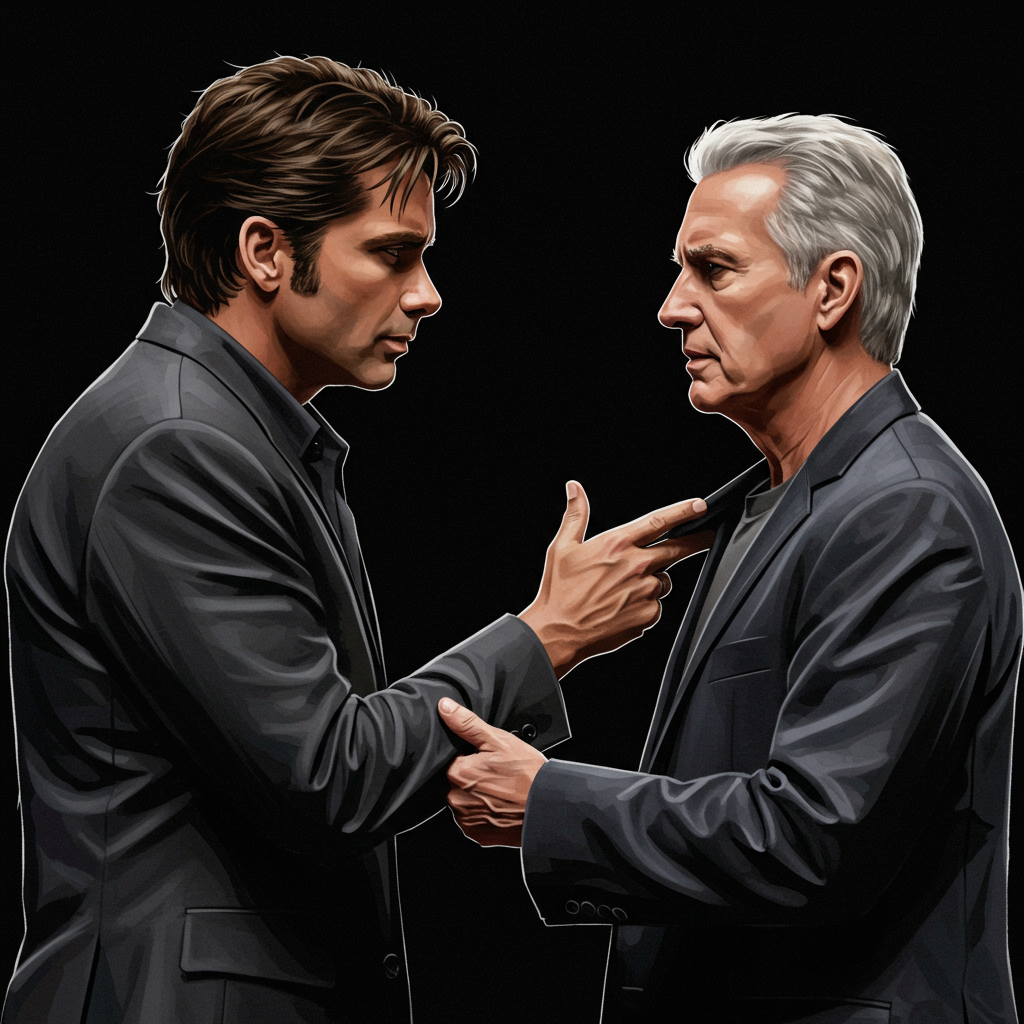The incident is infamous, a cautionary tale whispered with a cringe: the Carnival Triumph “Poop Cruise.” In February 2013, a four-day vacation turned into a week-long nightmare in the Gulf of Mexico for nearly 4,000 passengers and crew aboard the Carnival Triumph after a fire crippled the ship. Now, a Netflix documentary, part of the “Trainwreck” series, revisits this maritime disaster in graphic detail.
Titled “Trainwreck: Poop Cruise,” the 55-minute film delves into the chaos that unfolded after an engine room fire on February 10, 2013. While quickly extinguished, the fire damaged critical electrical cables, knocking out power, propulsion, and most horrifically, the sanitation system. The ship was left adrift, setting the stage for conditions described by survivors and crew as unimaginable.
The Descent into Chaos
The cruise began like any other, a festive roundtrip from Galveston, Texas, to Cozumel, Mexico, filled with poolside lounging and all-you-can-eat buffets. But on day four, as the ship headed back to the U.S., passengers were startled awake by alarms and an announcement for an “alpha team.” Though initially told everything was under control, the lights soon went out, plunging the vessel into darkness and uncertainty.
Without electricity, the most pressing issue quickly became the non-functional toilets. The crew scrambled to devise a contingency plan, instructing passengers to urinate in the showers and distributing red biohazard bags for solid waste. Waste bins overflowed rapidly, forcing passengers to leave the filled, foul-smelling bags in the hallways.
But not everyone followed the instructions, and the ship’s internal plumbing systems began to back up. Raw sewage spilled and flooded cabins and corridors. Passengers like Devin, who documented the ordeal, recounted walking through hallways where the floor was covered in excrement, making a “squish-squish-squish” sound with every step. Crew members described shocking scenes, including one restroom where waste layered with toilet paper resembled a “poop lasagna.” The smell across the ship became overwhelming.
Beyond the Sanitation Nightmare
While the toilet crisis dominated the narrative, the loss of power triggered a cascade of other severe problems:
Extreme Heat: Without air conditioning, cabins became unbearable. Passengers abandoned their rooms, creating makeshift “tent cities” on the open decks using blankets and sheets, competing for space.
Food Scarcity: Refrigeration failed, leading to the discarding of perishable food. The kitchen staff struggled to feed thousands with limited supplies, resulting in long waits for basic, often unappealing meals like soggy lettuce and tomato sandwiches. Some survivors felt the documentary didn’t fully capture the dire food situation, save for an incongruous steak and lobster meal on the final day.
Communication Blackout: Initially, passengers had no cell service, leading to fear and isolation, particularly for younger travelers. A brief moment of hope arrived when a sister ship, the Carnival Legend, sailed nearby, allowing temporary access to Wi-Fi. This allowed passengers to send distress messages and images, crucial in alerting the media to the escalating crisis.
Disorder and Desperation: In an attempt to boost morale, the ship reportedly opened the bar, offering free alcohol. This decision backfired, contributing to drunken behavior, including fights, public urination overboard, and passengers throwing the infamous red poop bags onto lifeboats or decks. Reports even emerged of couples engaging in sexual activity openly on deck amidst the chaos.
The Long Wait and the Rescue
The ship remained adrift for four days, drifting closer to the U.S. What was initially planned as a short tow to Mexico became a much longer journey to Mobile, Alabama. As tugboats slowly guided the crippled vessel, rough seas caused the already backed-up sewage systems to slosh and spill even more widely throughout the ship.
After nearly a week since the fire, on February 14, 2013, the Carnival Triumph finally reached port. Passengers disembarked, many visibly emotional, some even kissing the ground upon reaching solid land.
The Aftermath and Lasting Impact
The incident sparked significant media attention, evolving into what one Carnival spokesperson at the time described as a “complete media bloodbath” once passenger accounts hit social media. While a Carnival representative praised the crew’s “superhuman effort” during the ordeal, a maritime lawyer featured in the documentary argued the ship had a known “propensity for fires” and shouldn’t have sailed, though his related cases were settled.
Carnival Corporation invested $115 million to rehabilitate the vessel, which was renamed Carnival Sunrise, and implemented fleet-wide engine room upgrades, calling the event a “teachable moment.” Passengers received a full refund, $500 compensation, transportation reimbursement, and a voucher for a free future cruise.
The Netflix documentary, directed by James Ross, uses passenger footage, re-enactments, and interviews with survivors and crew members to recount the event. Reviews have called it “disturbing” and “hideous,” but also surprisingly compelling and even darkly “funny” due to the sheer absurdity of the situation. Ross aimed to tell a story that was more than just clickbait, exploring themes of “civilizational collapse in miniature” and the resilience of the human spirit. Despite the trauma, some survivors, like Rebekah and her father, found a deeper appreciation for overcoming adversity together and remarkably, still go on cruises today.
The “Poop Cruise” remains a notorious event in modern maritime history, a stark reminder of how quickly comfort can dissolve into desperation when fundamental systems fail at sea. The Netflix film ensures the shocking reality of that week is not forgotten.



